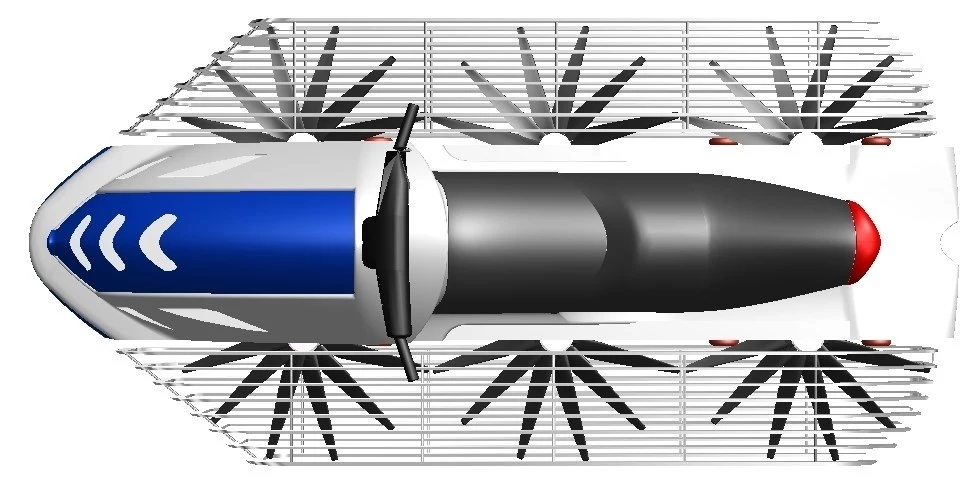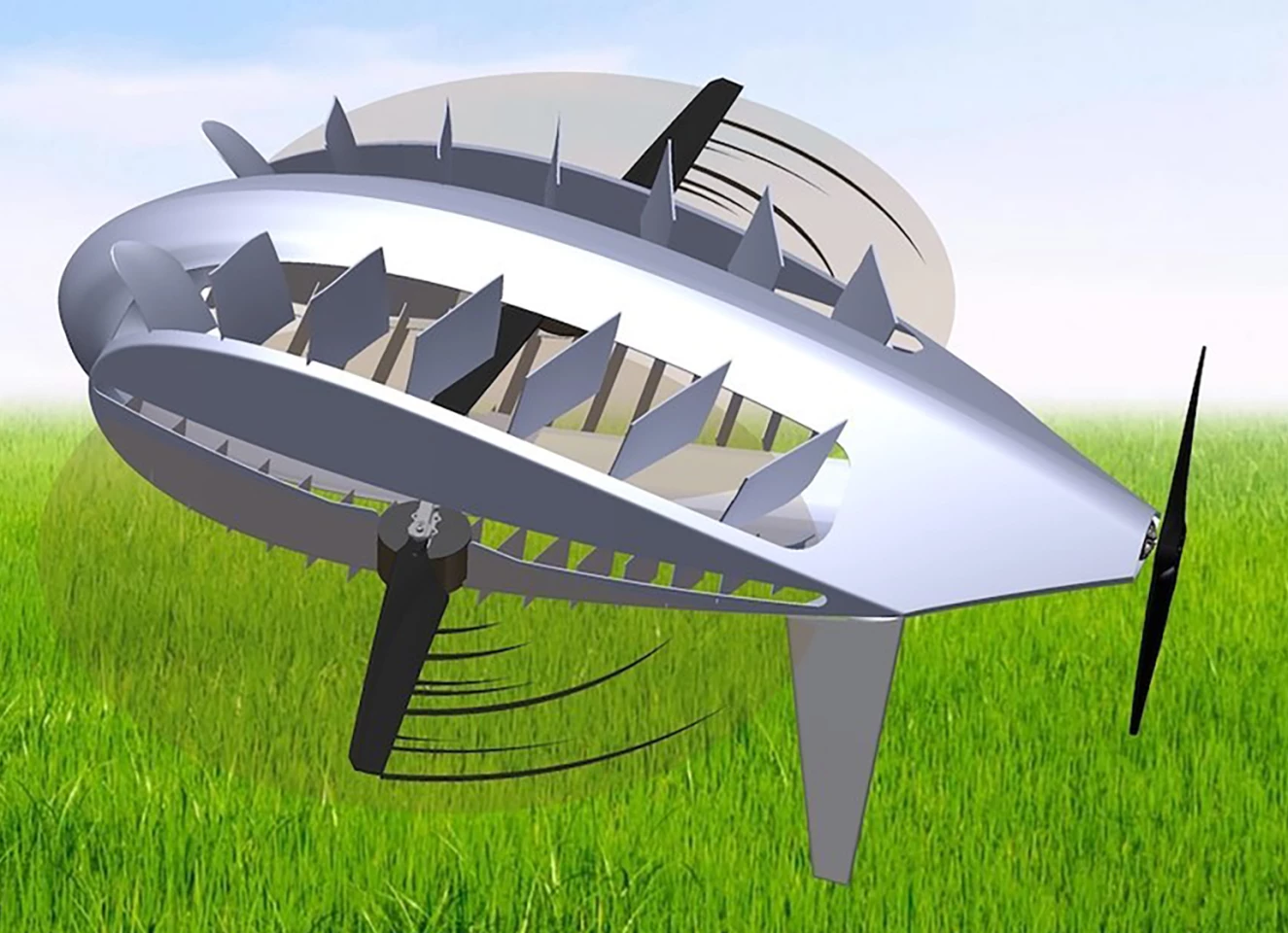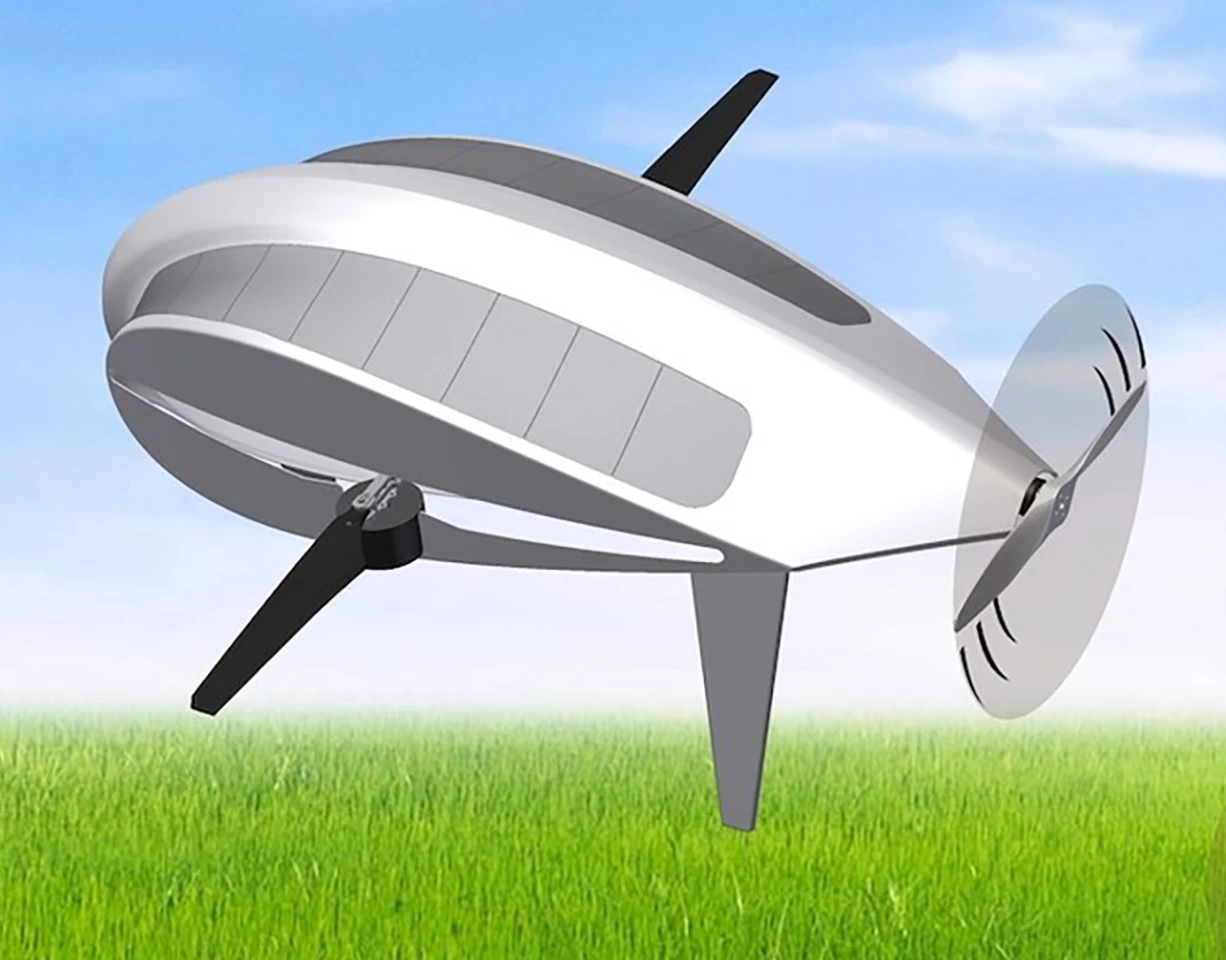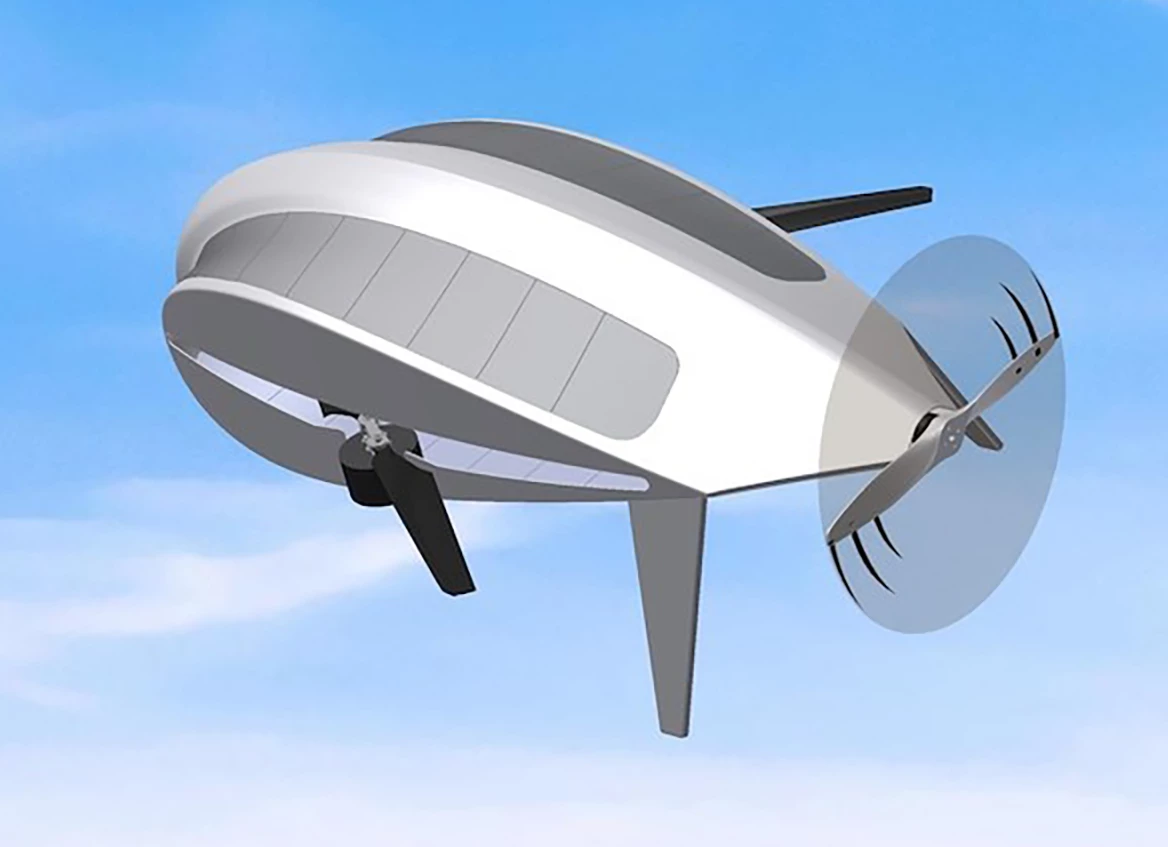Blainjett's fascinating hemispheric rotor concept is a totally unique and left-field approach to VTOL flight. The company (no relation to me, for the record!) came up with the bones of the idea while working on the Horizon eVTOL hoverbike, which we covered back in January, and trying to solve the problem of how to generate lots of efficient vertical thrust without taking up large amounts of space or exposing bystanders to fast-spinning propellers.
You could use a bunch of small ducted fans, something like what Lilium is doing in the air taxi segment. But small fans are extremely inefficient in VTOL lift and hover mode – Lilium is banking on its design making more sense in longer-range flight, where its low drag might give it an advantage over large-prop competitors. The hoverbike would be spending all its flight time in hover mode; small fans would kill its endurance, bigger ones would end up something like the treacherous Hoversurf Scorpion, which looks like a great way to cut down on limbs if you feel like you've got too many.
Blainjett's solution was to go with big, variable pitch rotors for efficiency, but to tuck the entire retreating half of the swept disc away under the bike's bodywork. Using a split swashplate, adapted from the helicopter world, they devised a system that would immediately ramp the blade pitch down to fully horizontal every time it went into its slot in the bodywork, then ramp it back up to a positive lift pitch when it emerged on the other side.

The result, according to Blainjett president Cary Zachary, was a system that took up about as much space in the aircraft's top-down footprint as a set of smaller, ducted fans, but with huge advantages in thrust output and efficiency – a factor of two to three times better on each metric.
That was on a hoverbike. Now, the company is designing a hemi-rotor, cruise-capable drone to take maximal advantage of the idea, and it adds a couple of interesting wrinkles to make things even more effective.
"If our lab testing continues on its current trajectory," Zachary says in a new press release, "we believe our [hemi-rotor-configured] prototype will boast the most efficient hover and forward flight profile of any rotor-borne VTOL aircraft."
Them's some fightin' words, alright, but the new machine certainly appears to up the ante. It runs just two lift rotors, but they're disproportionately huge compared to what you'd see on a typical drone, and they can presumably handle all the micro-corrections and nuances of VTOL flight thanks to their variable-pitch blades.

For VTOL and hover operations, the drone's top and bottom bodywork opens up in a series of slats, exposing a greater percentage of the rotors' swept area to airflow and deriving maximum lift. Then, as it begins to move forward under the power of a large rear pusher prop, these slats close up, and the lift rotors begin operating in hemi-rotor mode, flattening out as they pass through the bodywork and pitching back up when they're out in the air.

At a certain airspeed, the lift rotors are able to stop altogether, pointed out to the sides, and begin acting as wings. The drone's bodywork itself is designed to act as a wing as well when it's closed, and the ability to change the pitch of the blades on the lift rotors lets them operate as control surfaces in cruise flight.

That's a neat trick – we haven't seen anything like it before. But there's something else up Blainjett's sleeve here, too, because at high speeds, wide wings can cease to be an advantage and start causing more drag than they're worth. These are not ordinary wings, though; with full control over their orientation, this design can treat them as swing-wings, like the ones on the F-14 Tomcat ol' Thomas Cruise turned into a movie star in the first Top Gun. Angled sharply back, they offer a low-drag cruise option.

So what you've got is a vertical lift system with two enormous rotors instead of four or more much smaller ones, in a very compact ground footprint. If the air can move smoothly through the slats in the bodywork, I can see this being a super-efficient machine in VTOL and hover operations. And then in forward flight, you've got another sizeable propeller, a lift-generating body, and a uniquely tuneable set of wings that can be finely managed both in terms of blade pitch and their sweep angle relative to the body.
I wasn't so sold on the hoverbike back in January, but the way this remarkable concept is put into practice on this Hemi drone, I can totally see how it might be far and away the most efficient use of energy we've seen in the VTOL world to date – and one of the fastest drone designs in cruise flight as well. That's a combination with dynamite potential, as electric drones and eVTOL aircraft begin to proliferate in a multitude of different business models.
Blainjett says it's built small-scale prototypes and tested them in different phases of flight, achieving results that validated its expected lift and drag profiles. The company has entered a partnership with Fenris Electric Systems to develop the complex and custom flight control systems it'll need to operate all the bells and whistles on this bad boy.
As testing continues, Blainjett is looking to set up non-exclusive development and manufacturing partnerships to commercialize the technology, Zachary telling Unmanned Systems magazine that he's hoping to accelerate development by requiring any partners that further improve the technology to share their innovations with the wider group.
It's a wonderfully odd idea, but one with genuine potential to radically improve the power, speed, efficiency, payload capacity, range, endurance and ground footprint of a wide range of VTOL drones – and potentially manned aircraft as well. But it's early days yet – as you'll see in the video below, a marvellous nine-second piece of cinema packing in a mighty 127 freezable frames to give us a glimpse of the prototype. These guys are amazing, they've even managed to radically boost the speed of promotional videos.
Mind you, it sure doesn't seem like these are going to be on the quieter end of the drone spectrum, and that's not nothing when it comes to urban use cases.
Source: Blainjett











